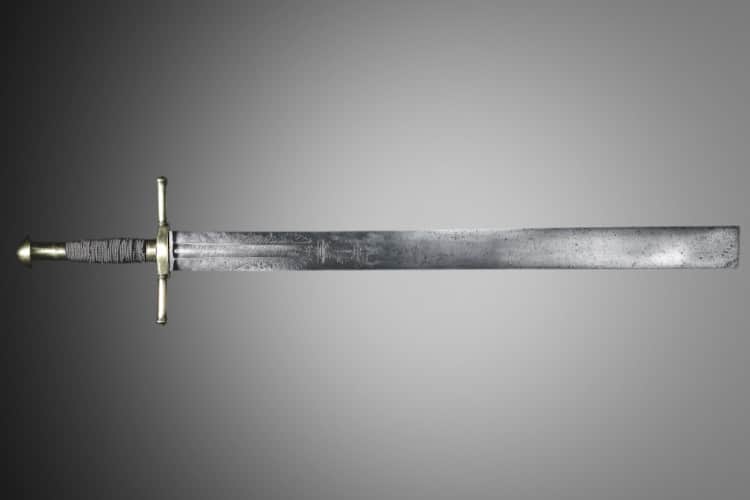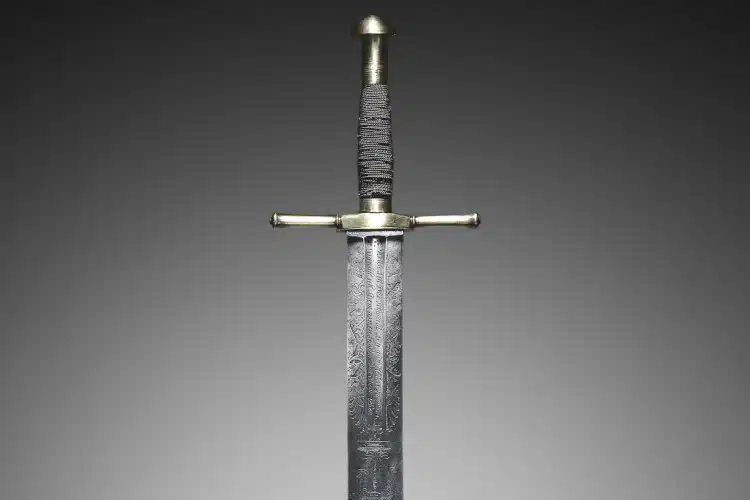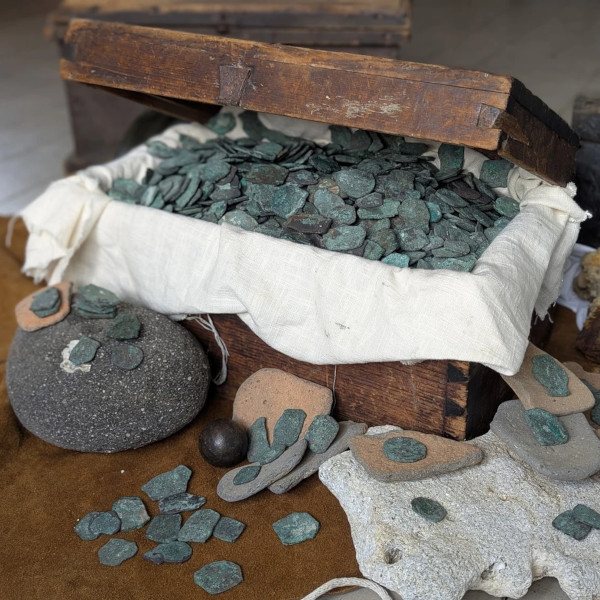
Photo: Cleveland Museum of Art via Wikimedia Commons (Public domain)
Swords are among the coolest historical items, captivating a lot of people due to their powerful nature. However, not all swords were used in combat. Some had a darker mission—such as executions. This purpose inspired blacksmiths and executioners to lighten the load with the help of motifs and legends embedded into the design.
One such example is a 17th-century executioner's sword in the Cleveland Museum of Art's collection. Originally from Germany, the blade reads, “Wan ich Das Schwerdt thu auff heben so / Wunch ich Dem armen sunder das Ewege Leben,” which translates to “When I raise this sword, so I wish that this poor sinner will receive eternal life.”
The sword is made of steel, wood, brass, and copper wire. It was acquired by the museum in 1916 as a gift from Mr. and Mrs. John L. Severance. It weighs 5.07 lbs, with an overall height of 108.9 cm (42 7/8 in.), of which 85.7 cm (33 3/4 in.) are from the blade. The quillions are 22.5 cm (8 7/8 in.), and the grip measures 15 cm (5 7/8 in.)
“Execution by decapitation was generally reserved for the nobility during the Middle Ages and Renaissance,” writes the museum about the origins of the sword. “Although the axe was favored in England, for centuries swords were used throughout Central Europe. The blades were often etched with moralizing inscriptions and designs representing Justice (as here), the gallows, the rack, or the Crucifixion.”
These kind of weapons were eventually phased out; after all, they were functionally closer to an axe than to a sword. “By the early 1700s swords were no longer primarily used in Europe for executions, but they still functioned as symbols of power,” continues the museum. “This sword was probably ceremonial for a formal procedure or procession.”
Still, the etching on the blade has fascinated the public throughout the centuries. After all, you don't get to see a historical object that tells a fully rounded story on its own every day.
This 17th-century executioner's sword has fascinated people throughout the centuries due to its frightening etching.

Photo: Cleveland Museum of Art via Wikimedia Commons (Public domain)
The blade reads, “Wan ich Das Schwerdt thu auff heben so / Wunch ich Dem armen sunder das Ewege Leben,” which translates to “When I raise this sword, so I wish that this poor sinner will receive eternal life.”

Photo: Cleveland Museum of Art via Wikimedia Commons (Public domain)
Related Articles:
1,900-Year-Old Ancient Roman Swords Are Found in a Cave Above the Dead Sea
Perfectly Preserved 3,000-Year-Old Bronze Sword Discovered in Germany
Museum Discovers That Its “Fake” Sword Is Actually an Authentic 3,000-Year-Old Weapon
8-Year-Old Girl Finds an Ancient Sword in a Lake and Becomes Queen of the Internet






















































































